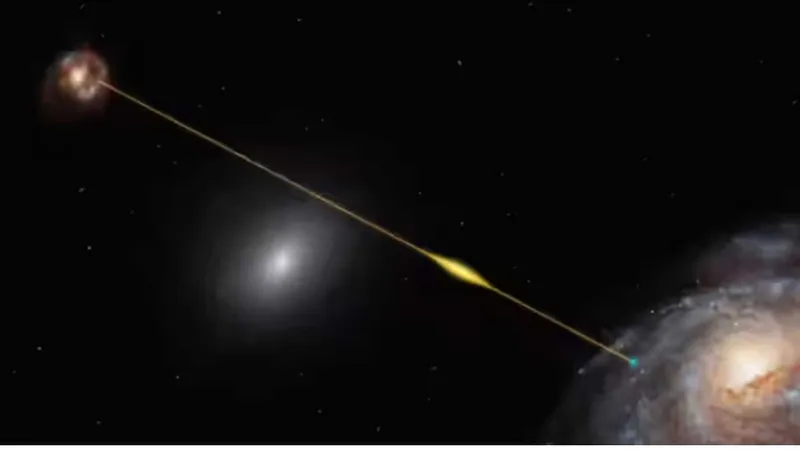
Unveiling the Mystery: The Longest Cosmic Radio Signal Ever Detected!
2024-10-23
Author: Daniel
Introduction
In a groundbreaking discovery, astronomers have identified the longest cosmic radio signal ever recorded, potentially emanating from either a neutron star or a one-of-a-kind white dwarf. This astonishing signal has a cycle lasting nearly an hour and has left scientists baffled and intrigued.
What are Pulsars?
Known as pulsars, rotating neutron stars are traditionally thought to be the sources of most cosmic radio signals. These celestial objects function like cosmic lighthouses, rotating at incredible speeds and sending out highly regular bursts of radio waves.
Cosmic Radio Signals
Typically, radio telescopes capture brief emissions known as "radio transients," which come from remote corners of the universe. These transients vary widely in behavior; some emit their signals just once, while others flash regularly. The newly discovered signal, identified as ASKAP J1935+2148, is particularly exceptional due to its prolonged cycle time, making it a notable record-breaker in the astronomical community.
The Discovery
During prolonged observations, researchers noted that ASKAP J1935+2148 exhibits a fascinating variety of behaviors—the signal includes lengthy, bright bursts, rapid faint pulses, and, intriguingly, periods of complete silence. The research findings have been published in the prestigious journal Nature Astronomy, propelling the investigation into the origins of this cosmic enigma.
Detection and Methodology
The radio pulse was detected using the CSIRO's ASKAP radio telescope, located in Wajarri Yamaji Country in Western Australia. The discovery occurred while monitoring gamma-ray sources and searching for pulses related to fast radio bursts, leading to this historic find.
Further Analysis
As researchers delved deeper, they incorporated the highly sensitive MeerKAT radio telescope in South Africa to conduct further analyses, which revealed three distinct modes of radio signals. The team observed bright, linearly polarized pulses lasting between 10 to 50 seconds in the first stage. This was followed by a second state characterized by much weaker, circularly polarized signals that lasted roughly 370 milliseconds. The third state showed a complete absence of pulses, showcasing the signal's unique variability.
Theoretical Implications
The researchers theorize that the interplay of complex magnetic fields and plasma flows from the source, combined with the intense magnetic environment surrounding it, may be responsible for these three distinct modes of signal emission.
Possible Origins
As for the signal's origin, scientists lean towards the possibility of a slow-spinning neutron star as the most likely candidate. While a white dwarf with a slow rotation period is also a contender, the absence of other nearby highly magnetic white dwarfs makes the neutron star scenario more probable.
Conclusion
This remarkable find not only deepens our understanding of cosmic phenomena but also opens up new avenues for astronomical research. As scientists continue to unravel the mysteries of the universe, one thing is clear: the cosmos still holds countless secrets waiting to be uncovered. Stay tuned for future updates as we explore the wonders of the universe together!





 Brasil (PT)
Brasil (PT)
 Canada (EN)
Canada (EN)
 Chile (ES)
Chile (ES)
 España (ES)
España (ES)
 France (FR)
France (FR)
 Hong Kong (EN)
Hong Kong (EN)
 Italia (IT)
Italia (IT)
 日本 (JA)
日本 (JA)
 Magyarország (HU)
Magyarország (HU)
 Norge (NO)
Norge (NO)
 Polska (PL)
Polska (PL)
 Schweiz (DE)
Schweiz (DE)
 Singapore (EN)
Singapore (EN)
 Sverige (SV)
Sverige (SV)
 Suomi (FI)
Suomi (FI)
 Türkiye (TR)
Türkiye (TR)